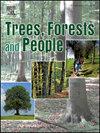Is the human-wild boar co-survival zone possible? A risk assessment of human-wild boar conflict using a maximum entropy model (MaxEnt)
IF 2.7
Q1 FORESTRY
引用次数: 0
Abstract
Human and wild boars were found to coexist within an environment where ecological and socio-economic systems intertwine, leading to conflict. To assess the potential for mutual dependency and constraint between humans and wild boars, the concept of "co-survival" was proposed. The study focused on Zixi, Chongyi, and Xiushui in Jiangxi Province, which served as a national pilot area for wild boar damage prevention. A total of 203 human-wild boar conflict points and 15 environmental variables from 2022 were selected to predict the spatial distribution of conflict risk. The results revealed the following: 1) The factors influencing human-wild boar co-survival were found to be closely related to both the behavior of wild boars and the natural and socio-economic conditions of the study area. Specifically, areas characterized by steeper slopes and located farther from residential areas or mountains tended to exhibit a larger co-survival zone. 2) Investment in wild boar invasion prevention infrastructure was positively correlated with the extent of the co-survival zone, indicating that increased investment contributed to the expansion of the shared living space between humans and wild boars. 3) Human-wild boar conflict was most prominent in agro-forestry transition zones, with fewer conflicts reported in high-standard farmland areas. Therefore, co-survival between humans and wild boars was considered feasible in low-risk and medium-risk zones under certain condition, where conflict remained within a manageable range.
人类与野猪的共同生存区可能吗?基于最大熵模型的人与野猪冲突风险评估
人类和野猪共存的环境中,生态和社会经济系统交织在一起,导致冲突。为了评估人类与野猪之间相互依赖和约束的可能性,提出了“共同生存”的概念。以江西省子溪、崇义、秀水为研究对象,开展了全国野猪危害防治试点。选取2022年以来的203个人野猪冲突点和15个环境变量对冲突风险的空间分布进行预测。结果表明:1)影响人-野猪共同生存的因素不仅与野猪的行为有关,还与研究区自然和社会经济条件密切相关。具体而言,坡度更陡、远离居民区或山脉的地区往往表现出更大的共同生存区。2)预防野猪入侵基础设施投资与共同生存区域的范围正相关,表明投资的增加有助于扩大人与野猪的共同生存空间。(3)人野猪冲突在农林业过渡区最为突出,在高标准农田区较少。因此,在一定条件下,在冲突保持在可控范围内的低风险和中风险区域,人与野猪共同生存是可行的。
本文章由计算机程序翻译,如有差异,请以英文原文为准。
求助全文
约1分钟内获得全文
求助全文
来源期刊

Trees, Forests and People
Economics, Econometrics and Finance-Economics, Econometrics and Finance (miscellaneous)
CiteScore
4.30
自引率
7.40%
发文量
172
审稿时长
56 days
 求助内容:
求助内容: 应助结果提醒方式:
应助结果提醒方式:


